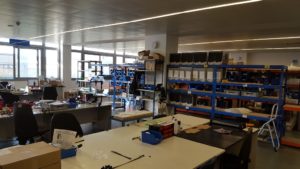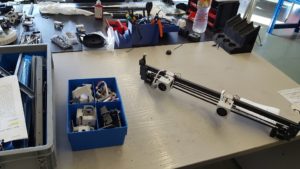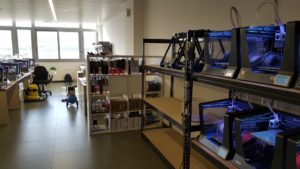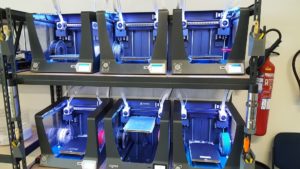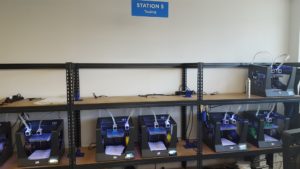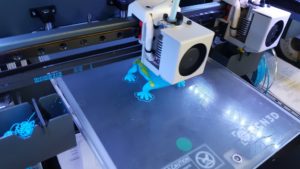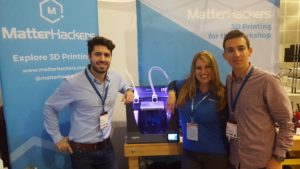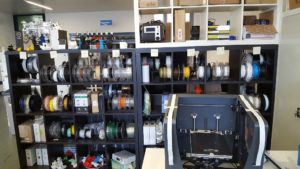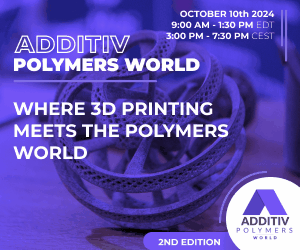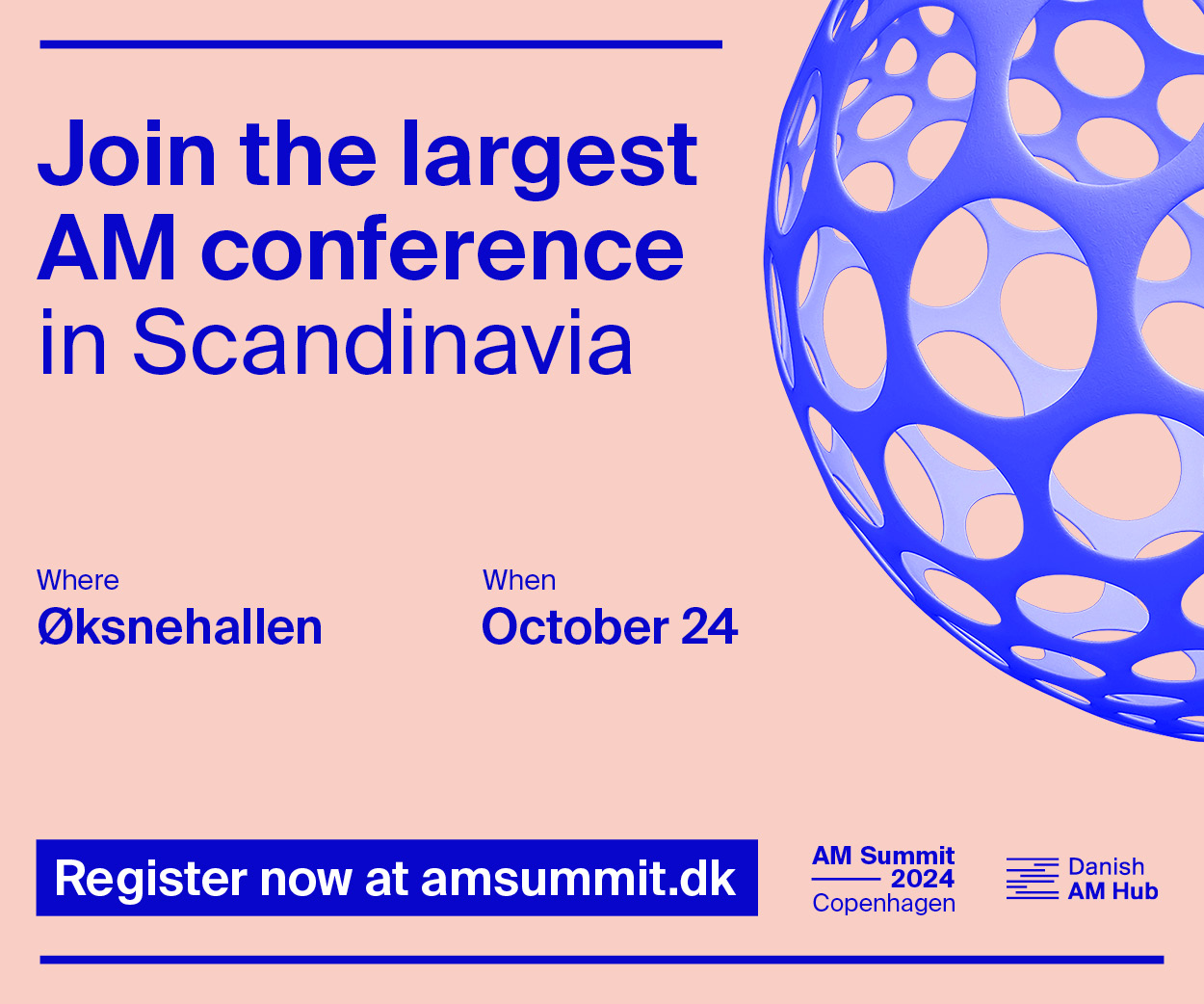 When in Catalonia, do as the Catalonians do; while in a larger-scale view that may be a circumstance set to change up world maps as we currently know them, on a business-by-business basis that also means taking another look at manufacturing as we know it. Open-source desktop 3D printer manufacturer BCN3D Technologies takes seriously its mission to democratize technology. On the wall of their second-story headquarters in Castelldefels, Barcelona, is written a reminder:
When in Catalonia, do as the Catalonians do; while in a larger-scale view that may be a circumstance set to change up world maps as we currently know them, on a business-by-business basis that also means taking another look at manufacturing as we know it. Open-source desktop 3D printer manufacturer BCN3D Technologies takes seriously its mission to democratize technology. On the wall of their second-story headquarters in Castelldefels, Barcelona, is written a reminder:
“We are changing the way the world is made.”
While such a refrain might sound right out of the old days of hype in 3D printing, at BCN3D it still fits as the young company takes a serious look at both its past and the future it is creating for itself. While I was in town this week for IN(3D)USTRY, as part of Barcelona Industry Week 2017, I took the opportunity en route to the airport to visit the headquarters of the popular company to learn more about their operations from the inside.
Marketing Manager Marc Felis started our tour with a look into the history of the company, in the small BCN3D “museum,” a lineup of landmark BCN3D printers. For the last three years, he explained, the company has been in the incubator-oriented RDIT Building – a big space, where there’s room for expansion. And expand they have done; while initially the company had rented out half of the second floor, they soon extended their footprint to encompass the full floor, ready to grow into the enlarged surroundings. As we toured the museum – really a hallway collection of old machines showcasing the company’s roots in RepRap and in building out their own designs – Felis pointed out the progress.
“We have had roots in RepRap since about 2012, and still release all files on GitHub,” he explained as we looked at some models built from RepRap files. “Then we started designing our own machines. We still release all files so everyone can download; we have seen a guy who made a Sigma at home. We don’t sell the frame, but we do release the files, and he created his own Sigma.”
- RepRap roots
- Developing aesthetic
While the debate over open versus closed source 3D printers continues, BCN3D has made very clear its stance on the issue; Felis told the story of the DIY-Sigma maker with a cheery grin. The first BCN3D Sigma 3D printer was developed in 2014, the result of a long process of trial and error in building up from files already out in the 3D printing world. The team wanted to incorporate an aluminum frame and an LCD touchscreen, keeping a sincere and significant focus on the entire user experience, as Felis noted.
“And here we have our first functional prototype; it no longer works, but we want to keep our history,” he told me.
In May 2015, the first Sigma was released at a show in Barcelona as the young company introduced its first machines. Over the last two and a half years, the team has remained hard at work, growing in terms of both team and product development. In 2017, BCN3D released two new 3D printers: the reengineered Sigma we saw showcased at SOLIDWORKS World in February, and the new Sigmax, unveiled last week in the UK during TCT Show.
- TCT Show 2017: Showcasing the Sigma…
- …and Sigmax 3D printers
We walked as we talked, and Felis showed off the rooms behind the scenes where the Sigma line of 3D printers come to life. It was a refreshing change to be allowed to take photos of and share information about what I saw in all those rooms, as Felis reminded me time and again that the company is fully open source and is dedicated to staying that way – everything happening in the facility may be behind locked doors for security, but happens with an overall sense of transparency. About 90% of the parts for each Sigma (and Sigmax) 3D printer is made in Barcelona; it is very important, Felis explained, to the team that they assemble everything on-site and keep production as local as possible, underscoring that pillar of the promise of 3D printing.
“It is very important to us to have the customer happy,” Felis told me as we walked through the technical service and R&D areas. “We always look for solutions, and we know it takes time. If in 3D printing, especially if open source, it will be not good to not respect the customer. We take our time, we are improving print profiles, we are trying everything in R&D and in technical services.”
In the production room, quality control is of the utmost importance. Numbered stations around the room indicate the state of each stage of each printer’s progress toward finding its new home with a customer. This is an important consideration as the team begins to ramp up production for commercial release; the Sigmax is set to begin shipping in November, and since the TCT Show release has already garnered more than 400 pre-orders.
The quality checking stations in production include:
- Structure
- Z Axis and X Axis
- Electronics and Power Up
- Calibration
- Testing
- Packaging
Each machine is put through its paces prior to being shipped out, with test prints proving the appropriate settings and proficiency necessary for release. A small printer farm in the back of the room also sees several other machines hard at work, 3D printing parts used in the assembly of each machine.
“This also shows that these printers can be used for viable end-use parts,” he noted.
The first print on the first Sigmax is housed in a small cubby of honor alongside an array of showcase examples. For the initial run of the new machine, the team sought to challenge it, choosing a multi-material, 100-hour print – it’s big, and especially for a first-ever print, shows a decent quality.
“All of our development has been for our community,” Felis said as we walked. “They are so important for us.”
For example, because they received feedback that the previous generation of Sigma 3D printer was noisy, they “did what we could to change that for the new one,” focusing on tweaking each feature for optimal user satisfaction. In addition to a focus on the customers, BCN3D plays close attention to its distribution channels, as resellers play a key role in the business strategy. Felis noted the importance of relationships with DesignBox3D in Ohio – where I visited this summer and saw BCN3D machines in the Sandusky showroom – and with MatterHackers in California – with whom BCN3D showed off their February release for the first time at SWW, as well as international resellers including Hawk 3D Proto in the UK, which highlighted the Sigmax at TCT Show.
- The Sigmax at the Hawk 3D Proto booth at TCT Show 2017
- [Photos: Sarah Goehrke]
- Introducing the revamped Sigma with MatterHackers at SOLIDWORKS World 2017
Paying attention to the business of what they do is key to the company’s vision, including moves into new target markets.
“The Sigmax is a more professional machine. It is not just for small companies, but also big companies, and so we try to make new content for the Sigmax that is not just what there is for the Sigma,” Felis explained. “Now we have sold about 4,000 Sigmas, and we are hoping about the same for the Sigmax. This will not be an easy goal, because it is more expensive, but the community is liking it.”
The new machine is more expensive because it offers enhanced capabilities going beyond what is possible with the Sigma 3D printer. A new line of hot ends as well as a full enclosure offer the opportunity to print with a larger variety of materials. BCN3D encourages the use of the filaments each user likes best, and will additionally be rolling out its own line of new filament soon. These advances are bearing the brunt of focus for the next month, Felis told me, and probably for the rest of this year.
“We are realizing that two products in one year is really important for us. Now we need to really focus on these and make everything right with them,” he said.
 Within the next two weeks, BCN3D is also planning to release the latest update to its version of Cura, as running software optimized to the latest features is necessary to access their full potential. Cura is itself an open source software, maintained by Ultimaker, and BCN3D ensures that their version of the software is targeted to their line of machines. The latest updates will include settings for the Mirror Mode and other features new for the Sigmax.
Within the next two weeks, BCN3D is also planning to release the latest update to its version of Cura, as running software optimized to the latest features is necessary to access their full potential. Cura is itself an open source software, maintained by Ultimaker, and BCN3D ensures that their version of the software is targeted to their line of machines. The latest updates will include settings for the Mirror Mode and other features new for the Sigmax.
“We are not just taking Cura itself, we are developing new features, integrating all our portfolio into it to make the user experience as better as possible,” Felis said, noting that the release will be available via GitHub.

I also ran into BCN3D Technologies CEO Roger Uceda at IN(3D)USTRY, where we caught up briefly ahead of my visit to the company HQ
Following our looks into the hardware and software aspects, we discussed the company itself. Felis said that I may have noticed while walking around the busy HQ that the company is quite young. I had, indeed. This, he explained, is intentional; the company works closely with local universities, including the Universitat Politècnica de Catalunya · BarcelonaTech (UPC) , where BCN3D has its own roots.
“We are quite young here, we interact with many students who are just finishing their educational careers. We have about 20% paid interns, as we try to get young people in and working. Our idea is to push young people to learn and to get into working,” Felis told me, adding that many of these interns go on to secure full-time positions with the company, or move into other professional opportunities following the experience.
BCN3D hosts education for 3D printing as well, holding week-long courses to train in the technology. Education and a sharing of knowledge are, as we often witness, critical to any hope 3D printing has for true growth as an industry, and on these parameters BCN3D can be seen to be a driving force indeed.
Beyond educational initiatives, the company ensures that its workforce offers a broad variety of perspectives gained through diversity.
“It is also important to have workers from different countries, not just Catalan or Spanish, but from more countries to bring more visions,” he explained.
Diversity in a workforce allows for a greater sharing of experiences and ideas, strengthening the roots from which a company can grow. The commitment to the sustained and sustainable maturation of business was, for me, a new aspect to the business done at BCN3D. And, on top of making solid 3D printers useful across a variety of applications, impressed me.
Discuss this and other 3D printing topics at 3DPrintBoard.com, or share your thoughts in the Facebook comments below.
[All photos: Sarah Goehrke]
Subscribe to Our Email Newsletter
Stay up-to-date on all the latest news from the 3D printing industry and receive information and offers from third party vendors.
You May Also Like
3D Printing Market Reaches $3.45B in Q2 2024, Marking 8.4% Year-Over-Year Growth
The global 3D printing market continued its upward trajectory in the second quarter of 2024, totaling $3.45 billion—a year-over-year increase of 8.4%. Despite a slight sequential decline from $3.47 billion...
New ABB Cobots Are 10 Times More Accurate for 3D Printing and More
ABB has introduced Ultra Accuracy GoFa cobots, which are ten times more accurate than the company’s previous cobots. While older industrial robots have driven innovation in concrete 3D printing, wire...
AM Expands Beyond 3D Printing at IMTS 2024
As discussed in our previous article on the Western hemisphere’s largest manufacturing trade show, the International Manufacturing Technology Show (IMTS), the industrialization of 3D printing was on display. This was...
Ursa Major & US Navy Make $25M Joint Investment in New 3D Printed Rocket Motor Prototype
Ursa Major, the Colorado-based company dedicated to building a North American rocket propulsion supply chain with advanced manufacturing, has become one of the first recipients of funding from the DoD’s...







